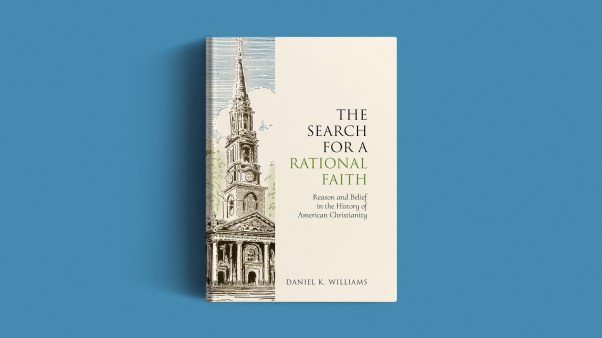(This is part two of a four-part series on Shiite Islam and the Iranian regime. Please click here to read part one.)
The previous article introduced the Shiite concept of justice through Ali ibn Abi Talib, cousin of Islam’s prophet Muhammad. Ali is a linchpin for understanding the difference between Sunni and Shiite Islam, the former representing the majority of Muslims in the world and the latter representing the majority in Iran. In 1979, Iran led a revolution that resulted in the world’s only Shiite government, establishing wilayat al-faqih, the “guardianship of the jurist,” meaning the rule of an expert scholar in sharia law.
This article will continue our examination of Shiite history, starting with the way Shiites see the Quran as containing both literal commands and mystical values. Shiites say it takes spiritual insight to understand the Quran correctly. And there are a multitude of traditions—the Sunna, from which Sunnis take their name—describing what Muhammad said and did.
Sunni scholarship recognizes many of these reports as authentic and others as uncertain or outright invented to support a political cause. They exist in the thousands, and although the standards of determining authenticity are internally rigorous, the task is a human endeavor.
Shiites say the Sunni criteria are necessarily insufficient. They believe proper Islamic leadership requires supernatural insight passed directly from Muhammad to his offspring—those who knew him best. Ali married the prophet’s daughter Fatimah, and they had two sons, Hasan and Hussein. Recall that Ali was assassinated in an Islamic civil war and leadership passed into Sunni hands.
In AD 680, Hussein led a revolt against Yazid, the sixth caliph, whom many Sunnis consider impious. Yazid’s army slaughtered Hussein with his small contingent in Iraq, marking another blow to Shiites while reinforcing their understanding of themselves as an oppressed but righteous minority. Shiites mark this event yearly during a commemoration called Ashura, honoring and mourning Hussein as the “Lord of the Martyrs.”
More description of this event will follow in part four. But its impact was profound. Hussein’s oldest son did not take part in battle due to illness, and he retreated to Medina, the holy city of Muhammad’s leadership in present-day Saudi Arabia. Here Shiites maintained a base of support, far from the Sunni center of power in Damascus.
Hussein’s son succeeded his father as imam, and the line continued for a total of 12 imams. Throughout this time, the Shiite community kept its distance from politics but often suffered persecution by the Sunni caliphs. Yet imams gave Shiites guidance—encouraging a quietist posture in formal submission toward unjust rulers. This involved taqiyya, hiding one’s true beliefs to survive an oppressive regime. Coming from Muhammad’s household, they believed they had the right to rule. Given their stature in society, wisdom advised them not to proclaim it aloud.
This, at least, is the interpretation given by the largest branch of Shiite Muslims, known as Twelvers. Another sect of Shiites centered its theology of the imam on the tradition, mentioned last article, in which Muhammad spoke in support of the oppressed. Known as Zaydis, they exist today primarily in Yemen and maintained that imams earn legitimacy not from family inheritance but by leading their people in revolt against unjust rulers. That willingness to fight is one reason why Sunni caliphs consistently persecuted the partisans of Ali—Zaydis and other Ali-linked movements constantly rebelled.
The other primary sect of Shiite Islam is the Ismailis, most prominent in Central Asia and the Indian subcontinent, led today by the Aga Khan. Of the twin Shiite theological concerns—justice and leadership—Ismailis focus on the esoteric knowledge they say the imam should have to lead well. Though Ismailis once commanded a powerful dynasty in Egypt, since the mid-19th century they have not sought to seize political power.
Iran is primarily a Twelver nation. And Twelvers had a particular problem after the line of imams ended with the disappearance of the twelfth: Who would guide the community? (The next article will describe the circumstances and implications of this disappearance.) A Zaydi imam could arise at any time. For Ismailis, the line veered to another figure and continues today. The Aga Khan claims to be the fiftieth in succession.
But Twelvers have an additional problem. After Ali, the imams did not possess political power. If Shiites did come to rule, how could they govern without an imam? Which leads back to the original question of this series: Is Iran’s Islamic Republic a faithful model of Shiite governance? Shiites are keen to apply their definition of justice in society through the Quranic injunctions to “command the right and forbid the wrong,” reflected—rightly or wrongly—in the role of morality police in Sunni Saudi Arabia and Shiite Iran.
The religious legitimacy of Iran’s Islamic Republic, however, does not rest solely on how well it applies the Quran. Some Iranians favor strict enforcement of female head covering, others less so. And although many courts have issued verdicts against converts to Christianity, others have ruled on their behalf.
The test comes in evaluating political power in the absence of the imam. Ayatollah Ruhollah Khomeini, Iran’s first supreme leader, offered a particular solution: The jurist, the religious scholar, rules in his stead. But he was not the first Twelver to confront this conundrum. The next article will continue the history of Shiite politics, from which Shiites can judge whether wilayat al-faqih is a consistent or aberrant answer.












